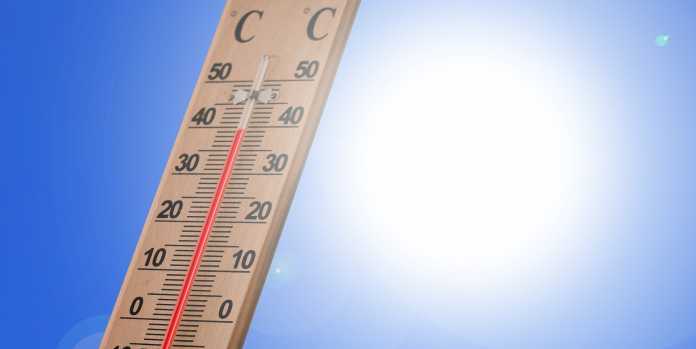Recent research from the U.S. Department of Homeland Security (DHS) indicates heat, humidity, and direct sunlight are strong weapons against the COVID-19 coronavirus. The research destroys leftist misinformation that global warming increases the risk and severity of coronavirus and similar pandemics. Instead, global warming is providing a major assist in the quest to battle COVID-19 and its substantial death toll.
“Our most striking observation to date is the powerful effect that solar light appears to have on killing the virus, both surfaces and in the air. We’ve seen a similar effect with both temperature and humidity as well, where increasing the temperature and humidity or both is generally less favorable to the virus,” said William Bryan, the acting head of the Science and Technology Directorate at the Department of Homeland Security, discussing the research results during President Donald Trump’s daily Coronavirus briefing on April 23.
the half-life of the coronavirus, in the absence of sunlight, decreases, from 18 hours when the temperature is 70 to 75 degrees to only one hour at a temperature of 95 degrees and as humidity increases from 20 percent to 80 percent. Direct sunlight, reduces the virus’s half-life from six hours to just two minutes at temperatures of 70 to 75 degrees and humidity of 80 percent.
DHS’s research found the half-life of the coronavirus, in the absence of sunlight, decreases from 18 hours when the temperature is 70 to 75 degrees to only one hour at a temperature of 95 degrees and as humidity increases from 20 percent to 80 percent. Direct sunlight reduces the virus’s half-life from six hours to just two minutes at temperatures of 70 to 75 degrees and humidity of 80 percent.
DHS’s findings echo and reinforce similar research from the National Institutes of Health that influenza, “is more infectious in cold winter temperatures than during the warmer months. At winter temperatures, the virus’s outer covering, or envelope, hardens to a rubbery gel that could shield the virus as it passes from person to person, the researchers have found. At warmer temperatures, however, the protective gel melts to a liquid phase. But this liquid phase apparently isn’t tough enough to protect the virus against the elements, and so the virus loses its ability to spread from person to person.”
And a Harvard University medical article discussing the flu states, “the main reason we have a flu season may simply be that the influenza virus is happier in cold, dry weather and thus better able to invade our bodies.”
Research also indicates infectious diseases in general should decline in number and severity should the earth continue to modestly warm.
For instance, in a study published in the Lancet in 2015, researchers examined health data from 384 locations in 13 countries, accounting for more than 74 million deaths. The authors found cold weather, directly or indirectly, killed 1,700 percent more people than warm or hot weather, with the authors writing, “[N]on-optimum ambient temperature is responsible for substantial excess in mortality, with important differences between countries.
Using a virtual office offers a way to keep yourself and your workers safe from the virus and other health risks. It can also significantly improve the logistical aspects of running a home business. With services like mail handling and forwarding, you maintain privacy while presenting a professional front. Discover how this can work for you at this link.
Commenting on the Lancet study in a 2017 New York Times article, author Jane Brody wrote, “[o]ver time, as global temperatures rise, milder winter temperatures are likely to result in fewer cold-related deaths, a benefit that could outweigh a smaller rise in heat-caused mortality.”
Contrary to the fear-mongering assertions of made by climate alarmists seeking to capitalize on the horror of the coronavirus, the wealth of scientific evidence points overwhelmingly to the conclusion that cold not heat that kills. A modestly warmer world, with shorter, less severe winters, should result in fewer premature deaths from disease, hunger, and other natural causes. That, as the Department of Homeland Security research shows, especially applies to COVID-19.
















Good discussion. But unfortunately the evidence for warming is lacking. We’ve had record cold this spring in Michigan. Here in the far south of the state we XC skied on fresh snow in mid April; normally I’m lucky if there’s snow in early March. The nearby orchard was running its blowers to keep blossoms from freezing just a week ago. Similarly, in early November our lake froze over, something I’ve never seen – December would be normal.
Are you sure things are getting warmer?